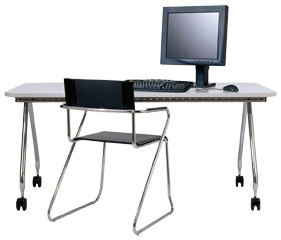Working from home has brought benefits to employees and employers besides driving down Covid-19 infection rates: reduced overheads, lower travel costs, more efficient use of time and a better work life balance. However, there is a downside for employees: reduced creativity, increased isolation from colleagues and, for some, mental health issues, according to a business resilience group.
According to a small-scale survey carried out by Resilience First, more than half of remote workers are now suffering from working from home fatigue, a condition that can reflect many of these downsides. And this is likely to be a long term situation, as European countries are entering a second lockdown and many of the biggest employers are confirming that remote working in some shape is here to stay for the foreseeable future. In a separate, and much larger, LinkedIn poll of 45,000 people, less than a quarter preferred to work only from home, with more than three-quarters preferring to work from either the office or in a home/office blend.
Resilience First has published the first of a two-part guide for member organisations dealing with issues around flexible working due to the Covid-19 lockdown, “Resilience and Flexible Working – The Ups and Downs”. The guide, produced with law firm Russell-Cooke, contains practical information for employers on how to maintain trust, teams and morale; how to maintain mental well-being; and how to keep employees safe whilst working remotely. It includes a customised ‘WFH Risk Assessment Template’ from Resilience First for employers.
Simon Collins, Chair of Resilience First, said: “The pandemic has brought about some significant changes to our previous, traditional working practices, and more adaptation will become apparent as we travel along the long and winding road to recovery. There is no doubt that companies are seeing change as both a necessity and an opportunity. The pandemic has accelerated that change in way we could not have imagined even at the end of last year.
“There is a realisation by many organisations that a significant proportion of their workforce will – for the foreseeable future – be dispersed and working away from the office for much of the time. Technology has been the great enabler here.
“While such flexible working may allow companies to reduce office footprints, there are potential downsides in terms of productivity hits through a lack of bonding, training and creativity. There is also the real danger of mental ill-health and skills fade in key areas like safety.”
And Russell-Cooke partner and health and safety specialist Kizzy Augustin said: “As the UK heads back into lockdown, individuals and businesses are feeling a sense of déjà vu. However, the stakes are much higher this time. Not only has fatigue set in, but the days are short, and the weather is against us. We also know that last time, three weeks of lockdown turned into far longer. For this reason, the Resilience First guide is extremely timely and we have been delighted to collaborate on it.”
“As a health and safety lawyer I know that many businesses are simply not aware of their duties towards their employees and the sanctions for non-compliance. It is important that we protect our employees both from the physical health issues that are uppermost in our minds (contracting Covid-19) and also the mental health issues that may arise as a result of prolonged working from home or changes to the usual working arrangements. We hope this guide will have wide relevance and broad buy-in.”
Visit https://www.resiliencefirst.org/our-work/knowledge-hub.










